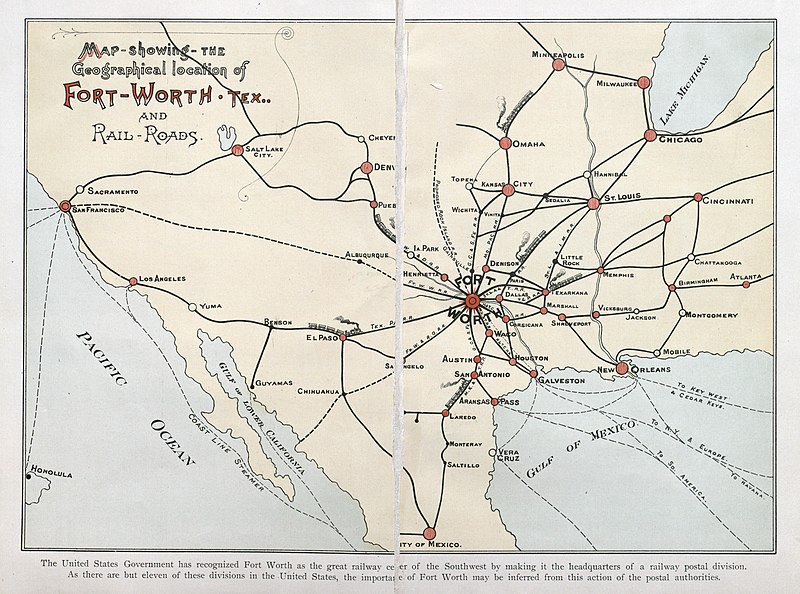English: Due to the international financial panic of 1873, the Texas & Pacific Railway, building from the east, temporarily stopped construction after reaching Dallas that year. However, in the town of Fort Worth, just thirty-four miles to the west, newspaper publisher and editor B. B. Paddock (1844-1922) of the Fort Worth
Democrat and his fellow citizens refused to give up. Paddock tirelessly promoted Texas, Tarrant County, and his adopted town in the national press, worked to see that construction continued on the Texas & Pacific as well as to secure other railways for the growing city, including the Fort Worth and Rio Grande Railway (chartered in 1885) for which he served as president. One of Paddock's most famous creations was his so-called "Tarantula Map" of which this chromolithograph is one of the best contemporary printed representations.
Paddock sketched the map as early as 1873, when a crudely executed and simple hand-drawn version appeared in the Democrat. He apparently drew a number of these for anyone who would listen to him share his vision for the city. The chromolithographed version here from 1888 shows Fort Worth as the hub of the Texas & Pacific, the Houston & Texas Central, the Gulf, Colorado & Santa Fe, the Fort Worth & Rio Grande, the Fort Worth & Denver, the Missouri, Kansas & Texas and other railroads. It boasts Fort Worth's recent selection as "the headquarters of a railway postal division" and appeared in a promotional and libretto of a "madcap" parody written by Ed. J. Smith specifically about Fort Worth based upon Englishmen W.S. Gilbert & Arthur Sullivan's then wildly popular satirical operetta The Mikado.
Among other projects, Paddock also promoted the Texas Spring Palace (a short-lived exposition and exhibit building in Fort Worth constructed entirely from Texas products), published the Fort Worth
Gazette, wrote a four-volume
History of Texas: Fort Worth and the Texas Northwest Edition (1922), and eventually served four terms as the city's mayor. His beloved city eventually became the headquarters for today's Burlington Northern Santa Fe, operating "one of the largest freight railroad networks in North America, with 32,500 miles of rail across the western two-thirds of the United States."


